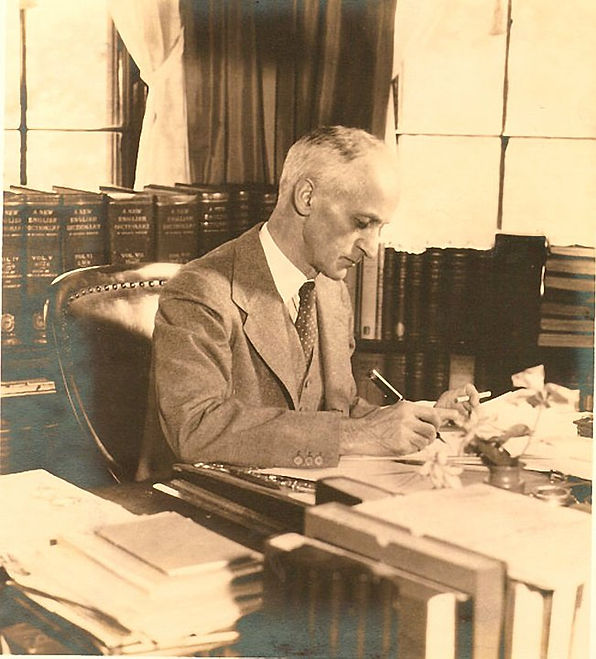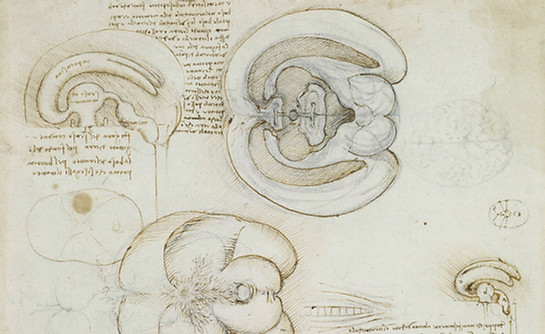
History of Neurosurgery and Pain
This chapter traces some important points in the history of Neurosurgery, Pain and the Riviera Pain Center.
Harvey Cushing
Harvey Cushing (1869-1939) is a native of Cleveland, Ohio (USA). He did his College at Yale and his medical school at Harvard. He was an intern at Mass Gen, then a resident at John Hopkins. He studied abroad particularly in Bern in Switzerland (Prof. Kocher) and in Liverpool in England (Prof. Sherrington). During the 1st war, he served in a military hospital in France. Thanks to his broad training and his inventive spirit, he became one of the founding fathers of modern neurosurgery.


Harvey Cushing and
Ivan Pavlov:
Ivan Pavlov, the famous physiologist, met Harvey Cushing, the equally famous neurosurgeon, at a congress in 1929.
It is thanks to these multiple encounters between basic sciences such as neurophysiology and clinical sciences such as neurosurgery that medicine will be able to truly progress in the treatment of pain.

Harvey cushing
The knot

Harvey cushing
In bed of the sick

Harvey cushing
In the recovery room

Harvey cushing
Notes

Harvey cushing
The discussion

Harvey Cushing Trephination Instruments

Harvey Cushing in the operating room
The English term "Operating theater" takes on its full meaning!

Harvey Cushing and
Gunnar Nyström
May 1930

Harvey cushing
Meeting

Harvey Cushing

Harvey cushing
In the operating room. We can clearly see the importance of education at this time.

Harvey cushing
In the operating room. This is Harvey Cushing's 2000th cranial operation, performed on April 15, 1931.

Harvey cushing
In the operating room.

Harvey cushing
Passion for books.

Harvey cushing
Writing of his observations.

Harvey Cushing
Portrait.

Harvey Cushing

Harvey cushing
In discussion.

Harvey cushing
Reading.

Harvey cushing
Discussion in bed.
Other notable figures

Victor horsley (1857-1916)
An English pioneer in neurosurgery.

Lars Leksell (1907-1986)
A Swedish pioneer in neurosurgery, responsible for radiosurgery and the development of an excellent stereotaxic framework

Jean-Marie Charcot (1825-1893)
One of the fathers of French neurology. He was one of the first to describe multiple sclerosis in 1868 and amyotrophic lateral sclerosis in 1869. He is also recognized for his work on neurosyphilis (tabes dorsalis) and hypnosis.

Walter Dandy (1886-1946)
American neurosurgeon from Johns Hopkins Hospital known for his work on hydrocephalus and pediatric neurosurgery.

Denise Albe-Fessard (1916-2003)
Denise Albe-Fessard was born in 1916 in Paris. She is the author of fundamental research in neurophysiology, particularly in the fields of micro-recording and in the understanding of the neurophysiology of pain. She is the author of a remarkable book on pain. She died in 2003 at the age of 87.

Henry Gray (1827 - 1861)
Henry Gray, the famous English anatomist and surgeon author of "Gray's anatomy" source of inspiration of certain television series ...

Wilson Greatbatch
(1919 - 2011)
Wilson Greatbatch is the inventor of the pacemaker. Initially used only for the heart, pacemakers then had multiple applications in the nervous system (spinal cord stimulator, deep brain stimulation, etc.).
Wilson Greatbatch died in 2011.

Marc Sindou
Marc Sindou is a neurosurgeon from Lyon who has contributed enormously to the neurosurgical treatment of pain, particularly for microsurgical techniques such as DREZ-lesion or microvascular trigeminal decompression.

Wilder Penfield (1891-1976)
Wilder Penfield is an American-Canadian neurosurgeon who has made a huge contribution to epilepsy surgery and founded the Montreal Neurological Institute (MNI).
We owe him the famous homunculus which gives cortical somatotopy.
He is the author of a fascinating book " No man alone " which was given to me by Prof. Jean-Guy Villemure.
Homunculus in 3D



James parkinson
(1755 - 1824)
James Parkinson was an English surgeon, pharmacist, paleontologist and political activist! described in 1817 the disease which bears his name, formerly called "trembling paralysis".
Leonardo da Vinci

Leonardo da Vinci
(1452 - 1519)
A multi-faceted genius, Leonardo da Vinci was very interested in human anatomy and made remarkable anatomical sketches, particularly in neuroanatomy.








Gazi Yasargil

Gazi Yasargil
Gazi Yasargil was born in Turkey in 1925, but he did all his neurosurgical training in Switzerland and was the head of the service in Zürich from 1973 to 1992.
He has been practicing since his "retirement" in Little Rock, Arkansas.
He was recognized as the neurosurgeon of the century by the journal "Neurosurgery" in 1999 for his work on microsurgery, particularly on vascular lesions (aneurysms, arteriovenous malformations, etc.)

Gazi Yasargil
Discussions in the operating room

Gazi Yasargil
Gazi Yasargil is the author of numerous works and of a series of books on microsurgery, particularly focused on vascular microsurgery.

Gazi Yasargil has also developed many instruments ranging from suction to microsurgical instruments through its famous retractor shown below


Mentors and local personalities

Nicolas de Tribolet
Neuchâtel aristocrat, son of a diplomat and polyglot, Prof. de Tribolet headed the Neurosurgery department of the CHUV for many years. His ambition to succeed Prof. Yasargil in Zürich having failed, he turned to the reunification of the services of the CHUV and the HUG, but faced with the scale of the work, he finally had to resolve to lead only the service in Geneva.
We particularly note his work on monoclonal antibodies in brain tumors as well as his investment in ADCON, a product that limits fibrosis.
With rare vitality, he continued to operate on private patients until the age of 75!
History of stereotaxis

Pierre Tschantz
Le Professeur Tschantz a dirigé le service de Chirurgie générale des Cadolles à Neuchâtel. J'ai eu le plaisir d'y passer à plusieurs reprises comme stagiaire et comme médecin-assistant.
Le Professeur Tschantz est le chirurgien qui m'a le plus marqué par ses capacités chirurgicales et son approche de la médecine. J'ai appris entre autre que l'on opère rapidement en évitant les gestes inutiles, pas en faisant les gestes rapidement !
Comme tous les médecins ayant passé par les Cadolles, je garde un souvenir très ému de Pierre Tschantz et des escapades à la Fouly. Il nous manque à tous.

Ernest Spiegel & Henry Wycis
1st human stereotaxis frame






